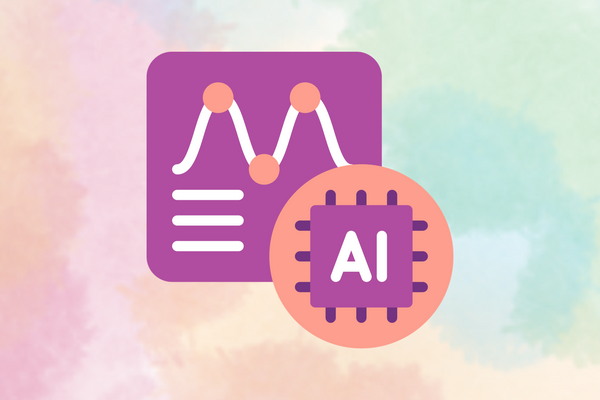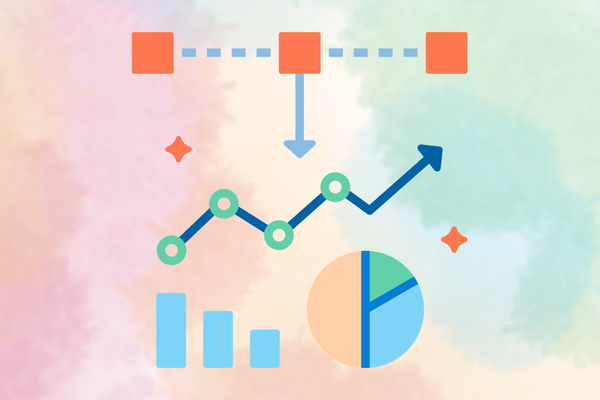
With businesses becoming more reliant on data-driven decision-making, having accurate data maps has become crucial. However, even mom-and-pop stores can’t rely on simple Excel sheets anymore and knowing how to do data mapping is a helpful skill to ensure business data is properly formatted.
Without accurate data mapping, you’ll have to deal with duplicate, unorganized data, regulatory issues and other technical difficulties.
But what exactly is data mapping, and how is it done?
This guide will cover everything you need to know about data mapping, what it is, and the best practices for reliable data maps. We’ll also touch on how to deal with common challenges and pitfalls you’ll face during the process.
Let’s get into it!
Key Takeaways
Data mapping is essential for refining business data, connecting data flows and removing duplicate data.
Before executing data mapping, you’ll have to do data classification, map out the process and create mapping templates.
Following data mapping best practices and avoiding common pitfalls can ensure compliance with data privacy regulations.
The Basics of Data Mapping

Data mapping refers to the process of refining your business data so it makes sense. Simply put, it involves connecting data fields across databases to help eliminate duplicate entries and make it easier to analyze complex data.
Let’s say you have a customer support system handling customer queries. Now, assume a customer submits a request through the system. You may still be processing the request when the impatient customer submits another request.
This may not be a problem for the support department- your team may simply mark the second request as “completed”. But now, assume you need to keep track of how many customers come back to you for complaints and have to deal with hundreds of duplicate entries.
This can easily be an analyst’s worst nightmare!
Data mapping will help clear the source data, matching data entries across different databases and allowing your business to eliminate duplicate data. While the above example is a simple example of how data mapping works, the reality is that modern businesses have to deal with more complex data issues, which is why it’s important to know how to do data mapping.
Key Goals and Objectives of Data Mapping
The goal of data mapping goes beyond getting a picture of data flows in your business or eliminating duplicate entries. Data mapping can help you further classify data, do data transformation, integrate different databases and identify potential data risks.
Key objectives of data mapping include:
Bridging informational gaps to help with accurate, data-driven decisions.
Preventing duplication and other data processing errors that could have a ripple effect on your business.
Ensuring compliance with data privacy regulations such as GDPR, CCPA, etc.
Identifying risk processing activities and reducing data processing risk.
Ensuring that data migration, integration and transformation processes are smooth and error-free.
In the end, apart from being required by law, data mapping can give your business an accurate picture of which data is stored, where it’s stored and how data moves in your business.
Before you go into the details of how to do data mapping, you’ll have to properly prepare for the process.
Preparing for Data Mapping
Before going into the nitty-gritty of the actual data mapping process, you’ll have to define the scope and purpose of the process.
What are you trying to achieve with the data maps? Do you want to ensure smooth data integration, or are you looking for the bare minimum needed for corporate compliance?
Also, what is the scope of your data mapping? Are you limiting it to a couple of departments, or do you want a holistic view of data processes within the whole business?
Once you’ve defined the scope of data mapping, you can assemble a team of experts. Even with automated mapping software, you’ll need data mapping experts to monitor and set up the data mapping process.
In such cases, it’s best to outsource compliance to a service that can ensure your business’s data mapping process is compliant with data regulations.
Data Identification and Classification
Once you’re ready to start mapping, the first thing to consider is the type and location of data to map. This includes identifying data elements, tagging and labeling data and categorizing data types.
First, identify what data sources need to be mapped. Most businesses have a few primary sources that branch into many destinations. For example, a customer who signs up for an email campaign may be recorded by the marketing, sales and finance departments. If you need to map out the data, ensure all sources are covered.
Once you define the parameters and which sources to target, you can move towards labeling and categorizing the data. For this, you can define standardized naming conventions and define the final format of the data.
More importantly, you’ll have to identify triggers and results when planning the mapping process. This is especially important if you have automated mapping software with real-time data mapping.
Another thing to consider is the mapping frequency you want to implement. Tools like IBM Infosphere have systems with real-time data mapping, but they’re expensive and more suited for large businesses. Some businesses do it quarterly, but ideally, you should be doing monthly data mapping for corporate compliance.
Classifying data, defining parameters and choosing which sources to map can be time-consuming, but remember- it’s a one-time task. Once you have a proper structure outlined, you’ll simply integrate the mapping software accordingly, and the rest is automated.
However, getting this step right is crucial, which is why it’s best to have a data compliance solutions provider do it for you.
Data Flow Analysis

Once you have the mapping parameters defined, it’s time to do a data flow analysis. This involves mapping out the data flow paths, documenting the data movement, and identifying data entry and exit points.
This step involves creating a screenshot of how data flows in an organization. For example, a customer signs up through an ad campaign. The data may be sent to the finance department, the operations or service department to deliver the product or service and the marketing department for campaign analysis.
Now assume the customer applies for a refund or return. The same data may flow to the returns processing department as well as the marketing and finance departments. It’s pretty simple to map this flow, right?
Now multiply this by hundreds or thousands of data sources. And consider that some customers may sign up through email, referral links, direct marketing and other methods. And consider other queries processing, customer support tickets and other inputs.
Not so easy to map manually anymore!
But there’s no need to create manual data maps. With the right data mapping tools and a proper accountability framework to guide implementation, you can easily automate this process.
Identify Data Exit Points
Not all data will remain in your business’s databases forever, and it’s important to map out the data’s exit points as well. For instance, you’ll need to flush out consumer data that’s no longer relevant to a department and move it to a storage database.
This is just an example- there are hundreds of different exit point scenarios your data maps should cover to ensure accuracy.
Mapping Data Relationships
A data flow analysis is only part of the data mapping process. Remember, the mapping defines data flows and relationships. So, the next step is to map out data relationships. This is complex, so we’ll break it down into three processes:
Defining Data Relationships
There’s no point in creating a data map if you don’t first establish relationships between data sources. Some data sets have a 1-to-1, direct relationship between the source and target data. This step defines whether the data should be mapped out directly or whether it needs to be transformed beforehand.
You’ll only have to transform data in cases where the source and destination data aren’t in the same format.
Establishing Data Hierarchies
Once you have an idea of how data sets are related, you can start establishing data hierarchies. A data hierarchy map can give you an idea of which data sources come first in the mapping process.
The benefit of this is that you’ll get to see which data is linked to higher business goals. It also filters out less important data and ensures your data maps have a solid purpose.
Linking Data for Comprehensive Mapping
Finally, you can start linking data sets based on relationships and hierarchies. Which datasets are similar across varying sources?
For example, a customer’s name and number may be part of your marketing data records, customer support records and service records. If the format is similar, you can easily map out where the customer data came from, which departments it flows to and where it’s stored.
Documenting Data Mapping

If you’ve completed the above steps, good news! You’ve laid the foundation for your business’s data mapping. Now, it’s time to tie these elements together with proper documentation.
The first and most important part of mapping documentation is to create mapping templates. A data mapping template includes:
Parameters of the source data.
Information on the target databases.
Triggers that cause the data transfer.
The standardized naming format of the data in the target database.
How often the data mapping process takes place.
Having a template is great, but remember to keep it flexible enough for change adaptation. Technology, processes, and even data privacy regulations can change in the blink of an eye, and you’ll need to implement change management accordingly.
Data Mapping Execution
You’ve probably heard of the 5 P’s- Prior Preparation Prevents Poor Performance. Well, the previous steps were all preparation. If you make it past them, this step is pretty easy.
A key part of executing your data mapping processes involves choosing the right mapping software. Like choosing data protection compliance services and other data processing software, getting data mapping tools to execute the mapping process is simple.
You can choose between open-source tools, cloud-based mapping tools or even large data mapping databases like IBM Infosphere.
Also, don’t assume that having an automated tool guarantees error-free mapping. Conduct regular data audits, do bug tests and keep the processes updated when you add new mapping software.
Data Mapping Best Practices
Since data mapping is a regulatory requirement for most businesses, you have to get it right and follow best practices. These include:
Following Data Governance Principles
Ask a few data experts, and everyone will have a different answer on what to include in data governance. To simplify things and ensure thorough compliance, keep these governance principles in mind:
Integrity
Transparency
Adaptability
Accountability
These principles should also be covered in your data compliance framework and governance policies.
Follow Standardization and Naming Conventions
Good data mapping will identify duplicate data and naming issues, which you can then transform to a standard format. But why include this unnecessary step in your data mapping process?
Any expert who knows how to do data mapping will tell you that it’s better to implement standardized naming conventions beforehand. Not only will you avoid adding a transformation step, but your data will also be cleaner.
Data Lineage and Traceability
Another mapping best practice involves documenting the data’s life cycle and tracing its flow through the system. If your data mapping software doesn’t do both, it’s time to reevaluate the above steps.
Challenges and Pitfalls
So, you’re all set! You have a data mapping template, have done testing and are finalizing the process. But don’t implement the mapping setup without considering these challenges and pitfalls:
Source diversity: A small retail store may have only a handful of data sources to consider, but nowadays, most businesses have to deal with thousands. These sources are often diverse, and mapping them under standardized naming conventions is often challenging.
Data volume: The sheer volume of data that modern businesses have to handle is enough to cause problems for mapping systems. Fortunately, most of the best data mapping tools are scalable, and the best ones can create real-time data maps.
Regulatory Compliance: Many data privacy regulations, including the GDPR, require you to have accurate data maps showing your business’s data flows. Ensuring compliance with these regulations can be challenging for non-experts.
These challenges can be frustrating, but they’re not impossible to overcome. For example, having expert compliance services can ensure your mapping templates are in line with regulations.
Final Thoughts
Data mapping is a complex process but absolutely necessary for your business. By avoiding common challenges, following best practices and creating mapping templates, you can get an accurate picture of data flows in your business.
However, creating accurate mapping templates and implementing these processes can be challenging. At Captain Compliance, our data compliance experts will help you set up mapping processes for thorough regulatory compliance.
Check out our compliance solutions today!
FAQs
What’s an Example of Data Mapping?
A customer may sign up after clicking on ads using their date of birth in the format mm/dd/yy. Now assume the data is recorded in the finance department in the format dd/mm/yy. Data mapping helps transform this data into a single destination database after converting it according to standardized naming conventions.
Learn more about outsourcing data protection officer work.
What are the Techniques of Data Mapping?
The 3 data mapping techniques are manual, semi-automated and fully automated data mapping. Manual data mapping is very restricted, and most data mapping tools allow you to automate the process for compliance.
Explore the process of CCPA-compliant data mapping.
What is the Purpose of Data Mapping?
The purpose of data mapping is to create an accurate map of data flows in a business. This helps reduce duplicate data, identify data risks and standardize data records in varying databases.
Learn more about the importance of data mapping documentation.
How to do Data Mapping in Excel?
You can highlight data and use the “maps” feature to compare the relationship between them in Excel. However, excel is extremely limited as a data inventory and can’t automatically map large volumes of complex data.